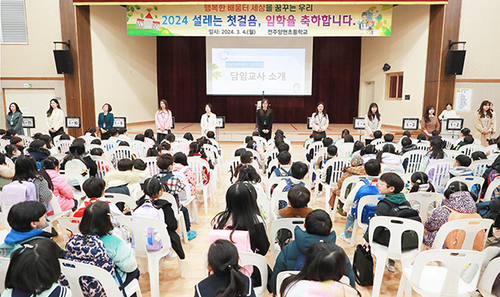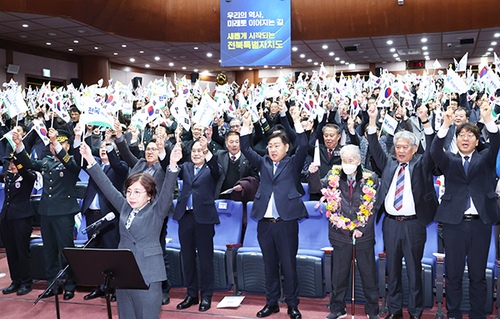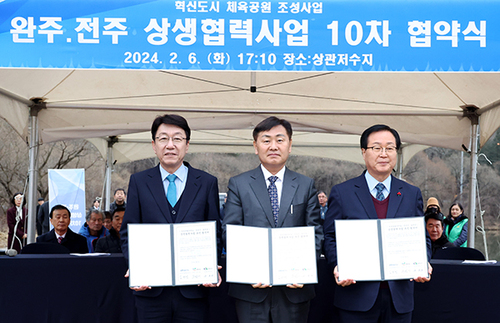| в–І м•Ҳлі‘мқј = лӘ…м§ҖлҢҖ лІ•л¬ҙн–үм •н•ҷкіј к°қмӣҗкөҗмҲҳ. © к№Җнҳ„мў… кё°мһҗ |
|
ліё м№јлҹјмқҖ мЎ°м„ көӯмҷ•мқҳ кІҪнҳёмӢӨмқё м„ м „кҙҖмІӯ(е®ЈеӮіе®ҳе»і)м—җ к·јл¬ҙн•ҳлҠ” м„ м „кҙҖ(е®ЈеӮіе®ҳ)мқҳ кІҪм ңм Ғ лҢҖмҡ°мҷҖ мӢ 분м Ғ м§Җмң„лҘј кі м°°н•ҙлҙ„мңјлЎңмҚЁ нҳ„лҢҖмӮ¬нҡҢмқҳ кіөл¬ҙмӣҗм ңлҸ„мҷҖ лӢӨлҰ„мқ„ мӮҙнҺҙліҙкі мһҗ н•ңлӢӨ.
м„ м „кҙҖмқҖ м„ңл°ҳкҙҖм§Ғ мӨ‘ л¬ҙл°ҳ мІӯмҡ”м§ҒмңјлЎң н•ӯмғҒ мҷ•мқҳ мёЎк·јм—җм„ң ліҙмўҢн•ҳлҠ” кҙҖкі„лЎң л¬ёкҙҖмқҳ н•ңлҰј(зҝ°жһ—, мҳҲл¬ёкҙҖмқҳ кҙҖлҰ¬лЎң мІӯмҡ”м§ҒмңјлЎң м„ л§қ л°ӣмқҢ), мҳҘлӢ№(зҺүе Ӯ, нҷҚл¬ёкҙҖмқҳ лі„м№ӯмңјлЎң көӯмҷ•м—җкІҢ н•ҷл¬ём Ғ мһҗл¬ёмқ„ н•ҳлҚҳ кҙҖмІӯ) л“ұмқҳ кҙҖм§Ғкіј 비мң лҗҳлҠ” м„ңл°ҳмқҳ мҠ№м§ҖлЎң нҳём№ӯлҗҳкё°лҸ„ н•ҳмҳҖлӢӨ.
нҠ№нһҲ, м–‘л°ҳ кҙҖлЈҢмӮ¬нҡҢм—җм„ң нҳ„кҙҖ(йЎҜе®ҳ)мңјлЎңм„ңмқҳ нҳңнғқмқ„ лҲ„лҰ¬л©° нӣ„мҶҗм—җкІҢлҠ” мқҢкҙҖмңјлЎңм„ңмқҳ нҳңнғқмқҙ мЈјм–ҙм ё лӢ№мӢң л¬ёкҙҖ мҡ°мң„мқҳ мӮ¬нҡҢ мҶҚм—җм„ң л¬ҙл°ҳмқҙ мІӯмҡ”м§Ғ(м§Җмң„мҷҖ лҙүлЎқмқҙ лҶ’м§Җ м•ҠмңјлӮҳ нӣ„м—җ лҶ’мқҙ лҗ мһҗлҰ¬лЎң н•ҷмӢқкіј л¬ёлІҢмқҙ лҶ’мқҖ мӮ¬лһҢм—җкІҢ мӢңнӮӨлҚҳ лІјмҠ¬лЎң мҡ”м§Ғмһ„)мңјлЎң к°„мЈјлҗҳкё°к°Җ м–ҙл Өмӣ лҚҳ мғҒнҷ©мқ„ к°җм•Ҳн•ңлӢӨл©ҙ м„ м „кҙҖмқҳ м§Җмң„лҠ” мғҒлӢ№н•ҳмҳҖлҚҳ кІғмңјлЎң мғқк°Ғлҗҳм–ҙ 진лӢӨ.
м„ёмЎ°лҢҖм—җлҠ” мҡ°мқҳм • нҷҚмңӨм„ұгҶҚнҳёмЎ°нҢҗм„ң л…ёмӮ¬мӢ гҶҚлҸ„мҠ№м§Җ мңӨн•„мғҒ л“ұмңјлЎң н•ҳм—¬кёҲ кІём„ м „кҙҖмңјлЎң мӨ‘мў…лҢҖм—җлҠ” мқҙмЎ°м°ёмқҳ м„ұнқ¬м•Ҳмқ„ кІём„ м „кҙҖмңјлЎң мһ„лӘ…н•ң кІғмқҖ л¬ёкҙҖ мҡ°мң„мқҳ мӮ¬нҡҢмғҒмқ„ н‘ңнҳ„н•ҳкі мһҲлӢӨ.
мЎ°м„ м „кё°мқҳ м„ м „кҙҖм—җ лҢҖн•ң кІҪм ңм Ғ лҢҖмҡ°лҠ” м „мӣҗ мІҙм•„лЎқмқҙ мЈјм–ҙмЎҢлӢӨ.
мІҙм•„лЎқмқҖ мЎ°м„ мӢңлҢҖ кҙҖлЈҢл“Өм—җкІҢ м§Җкёүн•ң л°ҳлҢҖкёүл¶Җмқҳ мқј нҳ•нғңлЎң м •н•ҙ진 л…№лҙүмқҙ м—Ҷмқҙ л„Ө кі„м ҲлЎң нҸүк°Җн•ң к·јл¬ҙм„ұм Ғмқҳ лҶ’кі лӮ®мқҢм—җ л”°лқј м„ңлЎң л°”кҝ” л…№лҙүмқ„ мЈјлҚҳ кІғмқ„ мқҳлҜён•ҳлҠ” кІғмңјлЎң м„ңл°ҳм§Ғ(л¬ҙкҙҖ)м—җлҠ” кҙ‘лІ”мң„н•ҳкІҢ мІҙм•„лЎқмқҙ мҡҙмҳҒлҗҳм—ҲлӢӨ.
мӨ‘мў… 25л…„(1530л…„)м „м—җлҠ” м„ м „кҙҖм—җкІҢ мһ…м§Ғмқҳ к·јнғңлҘј к·јл¬ҙм„ұм ҒмңјлЎң л”°м ём„ң лҙүкёүмқ„ мЈјм—ҲлҠ”лҚ° мҳӨлҠҳмқҖ к·ёл Үм§Җ м•„лӢҲн•ҳлӢӨкі н•ҳмҳҖмңјлӢҲ мқҙнӣ„ м„ м „кҙҖмқҳ лҢҖмҡ°к°Җ м–ҙл– н•ҳмҳҖлҠ”м§ҖлҠ” мҰқл№ҷн• мҲҳ мһҲлҠ” мӮ¬лЈҢк°Җ м—Ҷм–ҙ л°қнһҗ мҲҳлҠ” м—ҶлӢӨ.
н•ҳм§Җл§Ң, мЎ°м„ нӣ„кё°мқё мҳҒВ·м •мЎ°лҢҖм—җ м„ м „кҙҖкіј кІёкҙҖмқ„ кі„мҶҚн•ҳм—¬ мІҙм•„лЎқмқ„ л°ӣкІҢ н•ңлӢӨлҠ” кё°лЎқмңјлЎң ліҙм•„ мІҙм•„лЎқмқ„ л°ӣм•ҳлҚҳ кІғмңјлЎң мғқк°Ғлҗҳм–ҙм§Җл©° лӮЁн–үм„ м „кҙҖмқҳ кІҪмҡ° мһ„лӘ… лҗңм§Җ 6к°ңмӣ” нӣ„(6мӮӯ)м—җлҠ” мӮ¬кіј(м •6н’Ҳ)м—җ мғҒмқ‘н•ҳлҠ” ліҙмҲҳк°Җ мЈјм–ҙмЎҢлӢӨ.
м„ м „кҙҖмқҖ мІҙм•„м§Ғм—җм„ңлҸ„ к°ҖмһҘ лҢҖмҡ°к°Җ мўӢлӢӨкі мғқк°ҒлҗҳлҠ” 4кі„м Ҳмқҳ нҸүк· л…№лҙүмқ„ л°ӣлҸ„лЎқ(еӣӣеӯҹжң”пҰҡзӯүеҸ—зҘҝ) н•ЁмңјлЎңмҚЁ нғҖ мІҙм•„м§ҒліҙлӢӨ м•Ҳм •м Ғмқё лҢҖмҡ°лҘј л°ӣм•ҳлҚҳ кІғмңјлЎң мғқк°Ғлҗҳкі лҳҗн•ң мһҗмҶҗл“Өм—җкІҢ л¬ёмқҢмқҳ нҳңнғқмқ„ л°ӣлҠ” кҙҖм§Ғмқҙкё°лҸ„ н•ҳмҳҖлӢӨ.
м„ м „кҙҖм—җ лҢҖн•ң лІ•м ңм ҒгҶҚкІҪм ңм Ғ лҢҖмҡ°м—җ лҢҖн•ҳм—¬лҠ” м•һм„ң мӮҙнҺҙ ліё л°”мҷҖ к°ҷлӢӨ. л¬ҙл°ҳм§Ғ мӨ‘м—җм„ңлҸ„ мІӯмҡ”м§Ғ лҳҗлҠ” нҳ„м§ҒмңјлЎң л¶ҲлҰ¬лҚҳ м„ м „кҙҖмқҖ мӢ 분м Ғ лҢҖмҡ°м—җ мһҲм–ҙм„ңлҸ„ мөңкі мқҳ лҢҖмҡ°лҘј л°ӣм•ҳлӢӨкі ліј мҲҳ мһҲлӢӨ.
м•„мҡёлҹ¬ м„ м „кҙҖмқҳ мӢ 분м Ғ м§Җмң„лҘј мӮҙнҺҙліҙл©ҙ, м„ м „кҙҖмқҖ мһҗмҶҗмқҙ мқҢм§Ғмқ„ л¬јл Өл°ӣкё°лҸ„ н–ҲлҠ”лҚ° м„ м „кҙҖгҶҚл¶ҖмһҘ мһҗмҶҗм—җкІҢ л¬ёмқҢмқҳ нҳңнғқмқҙ лӮҙл Өм§Ҳ л§ҢнҒј мқҙл“Ө л¬ҙл°ҳм§Ғ(л¬ҙкҙҖ)м—җ кҙҖмӢ¬мқ„ к°Җм§Җкі мһҲм—ҲлӢӨ.
лҳҗн•ң, мЎ°м„ мҷ•мЎ° кұҙкөӯкіјм •мқҙлӮҳ мҷ•к¶Ңк°•нҷ”мҷҖ көӯк°ҖмІҙм ң м •л№„кіјм •м—җм„ң м—¬лҹ¬ м°ЁлЎҖмқҳ кіөмӢ мқҙ л°°м¶ңлҗҳм–ҙ мҷ”кі лҳҗ к·ём—җ лӘ»м§Җм•ҠкІҢ лӮҳлҰ„лҢҖлЎң м „мҹҒ, л°ҳм • л“ұм—җм„ң кіөмқ„ м„ёмҡҙ мӣҗмў…кіөмӢ кіј кі мң„ кҙҖлЈҢ집лӢЁл“Өм—җкІҗ м–ҙл–Ө нҳ•нғңлЎңл“ к·ём—җ кұё л§һлҠ” мҳҲмҡ°к°Җ н•„мҡ”н•ҳмҳҖмқҢмқҖ лӢ№м—°н•ҳлӢӨ н• мҲҳ мһҲлӢӨ.
мқҙлҹ¬н•ң мҳҲмҡ° л“ұмқҖ к°•л Ҙн•ң 집к¶Ңмұ…м—җ лҢҖн•ң л°ҳл°ңмқ„ л¬ҙл§Ҳн•ҳкі көӯмҷ•мһҗмӢ мқҳ мӢ ліҖмқ„ ліҙнҳён•ҳл©° мҷ•к¶Ңмқҳ мӢ мһҘ лӮҙм§ҖлҠ” к°•нҷ”лҘј лҸ„лӘЁн•ҳл©ҙм„ң н•ңнҺёмңјлЎңлҠ” мӢ мһҘлҗң мӢ к¶Ң(иҮЈж¬Ҡ)мқ„ кІ¬м ңн•ҳкё° мң„н•ң мӨ‘м•ҷ집к¶ҢмІҙм ңмқҳ к°•нҷ”лқјлҠ” м •м№ҳм Ғмқё мқҙмӨ‘нҡЁкіјлҘј лҸ„лӘЁн•ҳлҠ” мҲҳлӢЁмқҙм—ҲлӢӨ.
м•„мҡёлҹ¬, м„ м „кҙҖмқҙ көӯмҷ•мқҳ нҳёмң„ мҲҷмң„ л“ұ кө°мӮ¬м Ғмқё лӘ©м ҒлҸ„ мһҲм—Ҳм§Җл§Ң мҳҲмҡ°м°Ёмӣҗм—җм„ң мқҢм§Ғмқ„ л¶Җм—¬н–ҲлӢӨ ліј мҲҳ мһҲлӢӨ.
мЎ°м„ м „кё° м„ м „кҙҖмқҳ мӢ 분мқҙ м„ёмЎ° 8л…„м—җлҠ” 5н’ҲкҙҖ мқҙмғҒмңјлЎң мһ„лӘ…лҗҗкі м„ёмЎ° 10л…„м—җлҠ” мҳҒмқҳм •гҶҚ мўҢмқҳм •гҶҚлі‘мЎ°нҢҗм„ң л“ұмңјлЎң н•ҳм—¬кёҲ к°•л¬ҙм„ м „кҙҖм—җ мһ„лӘ…н•ҳмҳҖлӢӨ.
м„ м „кҙҖмқҳ мқёмӣҗм—җ лҢҖн•ң мҰқк°җмқ„ ліҙл©ҙ, м„ёмЎ°лҠ” м •мғҒм Ғмқё л°©лІ•мңјлЎң 집к¶Ңн•ң кІғмқҙ м•„лӢҲкё° л•Ңл¬ём—җ мӢңмң„, к¶ҒмӨ‘мҲҷмң„м—җ нҒ° кҙҖмӢ¬мқ„ л‘җм–ҙ 15лӘ…мқҳ м„ м „кҙҖмқ„ м„Өм№ҳн•ҳмҳҖмңјлӮҳ мҷ•к¶Ңмқҙ 비көҗм Ғ м•Ҳм •лҗң м„ұмў…гҶҚ мӨ‘мў… мӢңкё°м—җлҠ” мҠ№м •мӣҗ мҠ№м§ҖмҷҖ 비мҠ·н•ң 8лӘ…мқҳ м„ м „кҙҖмқ„ л‘җкі мҡҙмҳҒн•ҳмҳҖлӢӨ.
м•„мҡёлҹ¬ мһ„진мҷңлһҖ мқҙнӣ„м—” м •м№ҳ л°Ҹ кө°мӮ¬мЎ°м§Ғ л“ұм—җм„ң м·Ём•Ҫм„ұмқ„ л“ңлҹ¬лӮҙкі мЎ°м •м—җ лҢҖн•ң л¶ҲмӢ л“ұмңјлЎң мқён•ң мҷ•к¶Ңмқҳ м•Ҫнҷ” л“ұмңјлЎң м„ м „кҙҖмқ„ 38лӘ…мңјлЎң лҢҖнҸӯ мҰқмӣҗн•ҳмҳҖмңјл©° кҙ‘н•ҙкө° лҳҗн•ң нһҳкІ№кІҢ мҷ•мң„м—җ мҳӨлҘҙкі кі„м¶•мҳҘмӮ¬ л“ұмңјлЎң мқён•ң кІ¬кі н•ң к¶ҒмӨ‘мҲҷмң„к°Җ н•„мҡ”н•Ём—җ л”°лқј 48лӘ…мқҙлқјлҠ” л§ҺмқҖ м„ м „кҙҖмқ„ м„Өм№ҳн•ҳм—¬ мҡҙмҳҒн•ҳмҳҖлӢӨ.
м„ м „кҙҖ мһ…мӮ¬мһҗмқҳ мӢ 분лҸ„ мӢңлҢҖм Ғ м„ұкІ©м—җ л”°лқј ліҖн–ҲлҚҳ кІғмқҖ лӢ№м—°н•ң мқјлЎң лҸҷл°ҳ(л¬ёкҙҖ)мһ„лӘ…мқҙлӮҳ л¬ёгҶҚл¬ҙкіј м¶ңмӢ мһҗлҘј мӨ‘мӢ¬мңјлЎң мһ…мӮ¬мӢңнӮӨлҠ” кІҪмҡ°лҸ„ мһҲм—Ҳкі л¬ёлІҢмқҙ к°•нҷ”лҗң 16м„ёкё° мқҙнӣ„м—җлҠ” л¬ёмқҢ м¶ңмӢ л“Өмқҙ лҢҖкұ° м„ м „кҙҖмңјлЎң мһ…мӮ¬н•ҳмҳҖлӢӨ.
нҠ№нһҲ, л¬ёкҙҖмқҖ н•ңлҰј л¬ҙкҙҖмқҖ м„ м „кҙҖмқҙлқј нҳём№ӯлҗ л§ҢнҒј м•Ҳм •м Ғмқё мӢ 분мқ„ мң м§Җн•ҳкі мһҲм—Ҳмңјл©° мҠ№м •мӣҗмқҳ мҠ№м§ҖлҠ” мІӯмҡ”м§Ғ мқҙлқј л¶ҲлҰ¬м§Җ лӘ»н•ң л°ҳл©ҙм—җ м„ м „кҙҖмқҖ мӢӨлЎқм—җ мһҗмЈј мІӯмҡ”м§Ғмқҙлқј л¶Ҳл Ө 진 кІғмңјлЎң ліҙм•„ көӯмҷ•мқҳ мёЎк·јм—җм„ң мҠ№м§ҖмҷҖ лҸҷмқјн•ң кё°лҠҘмқ„ к°–кі мӨ‘мҡ”н•ң м°ёлӘЁм—ӯн• мқ„ мҲҳн–үн•ҳмҳҖлӢӨ 여겨진лӢӨ.
вҳһ м•„лһҳлҠ” мң„ кё°мӮ¬лҘј кө¬кёҖ лІҲм—ӯмқҙ лІҲм—ӯн•ң мҳҒл¬ёмқҳ 'м „л¬ё'мқҙлӢӨ.
гҖҗBelow is the 'full text' of an English article translated from the above article with Google Translate.гҖ‘
гҖҗColumnгҖ‘ Economic treatment of the Joseon King's bodyguard and propaganda
Ahn Byung-il = Visiting Professor, Department of Legal Administration, Myongji University
This column attempts to examine the differences from the civil service system in modern society by examining the economic treatment and status of the propaganda officers who work in the Propaganda Office, the guard office of the King of Joseon.
Shenzhen Hall is an unban Qingyo post among the Seoban officials, and is always assisted by the king's aide. ), etc.
In particular, the yangban bureaucratic society enjoyed the benefits as a hallway, and descendants were given benefits as a sound hall. Considering the situation in which it was difficult to be regarded as an important job as a leader), the position of the propaganda officer seems to have been considerable.
The appointment of Woo Eui-jeong, Hong Yun-seong, Hojo Pan-seo, Labor and Sa-shin, Do Seung-ji, and Yoon Pil-sang as an adjunct war officer, and Jo-Cham Lee's Seong Hee-an as an adjunct war officer in Jungjong University, expresses the social image of civilian superiority.
The economic treatment of the propaganda hall of the early Joseon Dynasty was given to all members.
Chea-rok is a form of counter-benefit paid to officials in the Joseon Dynasty, meaning that no nok-bong was given to each other according to the high and low work scores evaluated in four seasons. Aroc was in operation.
25 years prior to King Joongjong (1530), a salary was given to a propaganda officer based on his work record, but today it was said that this was not the case.Therefore, there is no evidence of the propaganda officer's treatment, so it cannot be revealed.
However, it is believed that the record that the Yeong-Jeongjodae, in the late Joseon Dynasty, continued to receive the Chea-lock, and in the case of the South-bound Propaganda Hall, an apology was received six months after the appointment (6). ) Has been awarded.
It is thought that the Shenzhen Hall received more stable treatment than other Cheahjik by receiving the average green peak of the four seasons, which is considered the best treatment in Cheahjik, and it is also an official position that received the benefits of munum from their descendants. I did.
The legal and economic treatment of the propaganda hall is as previously discussed. Among the unemployed, the Propaganda Officer, who was called the Qing Yoo or the incumbent, received the best treatment in terms of status.
In addition, when looking at the status of the Shenzhen Hall, the children of the Shenzhen Hall inherited Eumjik, but they were so interested in these non-banjik (non-gwan) that the benefits of mun-eum were given to the descendants of the Propaganda Officer and the manager.
In addition, many times during the founding process of the Joseon Dynasty, reinforcing the kingship, and improving the state system, there have been many times of conviction. It is natural that it was necessary.
Such courtesy and courtesy are the political double of the reinforcement of the centralized system to prevent the rebellion against the powerful ruling policy, protect the king's own personal affairs, and promote or strengthen the kingship while on the other hand. It was a means of promoting the effect.
In addition, although the Propaganda Officer had military purposes such as the king's escort and detention, it can be seen that it was given a sound position in terms of courtesy.
In the 8th year of King Sejo, the status of the Propaganda Officer in the early Joseon Dynasty was appointed to more than 5 Pum-gwan.
When looking at the increase or decrease in the number of propaganda officers, Sejo was not in power in a normal way, so 15 people were installed with great interest in protests and court detention. Was operated.
In addition, after the Imjin Invasion, politics and military organizations revealed vulnerabilities, and the propaganda hall was greatly increased to 38 due to the weakening of the kingship due to distrust of the court, and the Gwanghae Army also struggled to ascend to the throne, and a solid court detention due to Gyechukoksa was required. A number of propaganda halls named Myeong were installed and operated.
It is a matter of course that the status of entering the Shenzhen Hall changed according to the characteristics of the times, and there were cases where appointment of companions (academic officers) or those from liberal arts and martial arts were selected.
In particular, the civilian officials maintained a stable status enough to be referred to as the Hallym military officer as the propaganda officer, and while the victory of the seungjeongwon was not called the qingyojik, the propaganda hall was often referred to as the qingyojik in the Annals. It is believed to have performed an important staff role.




 м»Өл®ӨлӢҲнӢ°
м»Өл®ӨлӢҲнӢ°  н”јн”Ң
н”јн”Ң  лҸ…мһҗнҲ¬кі
лҸ…мһҗнҲ¬кі
















 л§Һмқҙ ліё лүҙмҠӨ
л§Һмқҙ ліё лүҙмҠӨ











